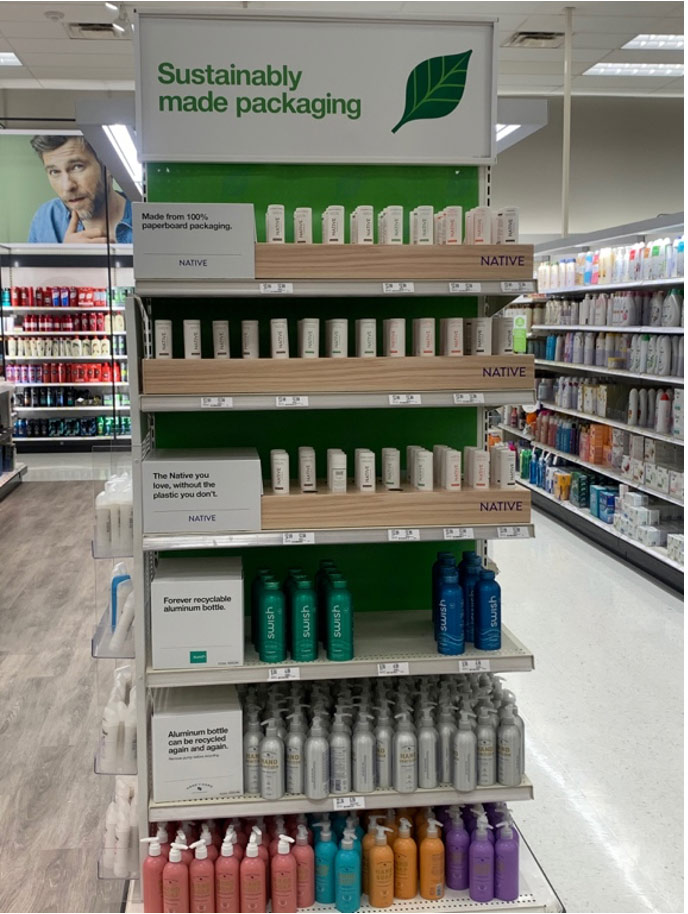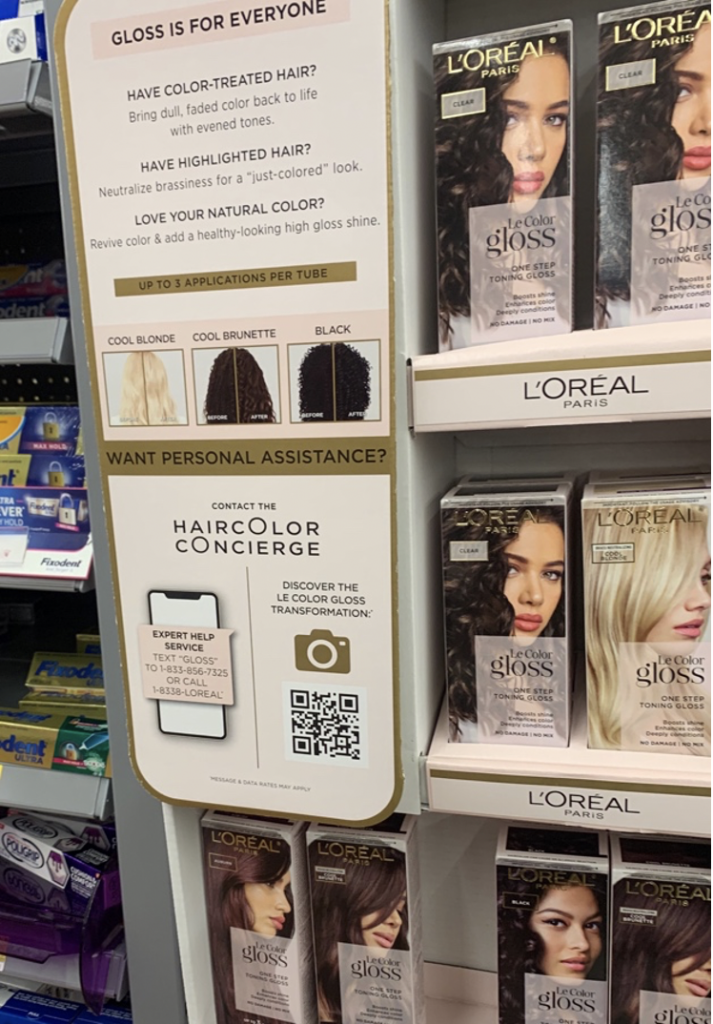Shopper Education: Optimizing Customer Experience with POP Signage

The e-commerce battle between big-box stores and online-only retailers has driven customer expectations for the online retail experience to new levels. From personalization to speed of delivery, today’s shoppers expect a seamless and friction-free customer experience.
The challenge for brick-and-mortar retailers is providing that same kind of online ease at store locations. Consumer behavior is still leading shoppers to go in-store for both the tangible and social aspects. But merchants need to give them a reason to make that purchase, or shoppers may opt for e-commerce instead.
How Marketing Shapes the Customer Experience In-Store and Online
According to a study by Global Web Index (GWI), the majority of American consumers (50%) turn to ads primarily for product information. That’s a higher percentage than those looking for:
- Product discounts or special offers (40%)
- Educational content (33%)
- Relevant messaging (29%)
- Humor or entertainment (29%)
These findings highlight the informational value consumers expect from marketing, especially in a cluttered media landscape.
So the digital customer experience, while selling to the shopper, can give a quick, easy, and entertaining dive into product attributes. Consumers rapidly learn about something and why they need to have it. How can retailers imitate this educational experience in-store, where countless items are competing for the consumer’s attention?
For example, the typical Sephora store, according to Wikipedia, is 11,380 square feet and carries an eye-popping 13,000 products. That’s a lot of turf to cover and a lot of products for any shopper to navigate through. While the displays are all beautiful, their messages each vie for attention, shouting, “Buy me!” “No, me!” Such marketing cacophony could be overstimulating and overwhelming to the point that it impedes buying decisions. But Sephora has a secret weapon: its trusted “cast members,” or beauty advisors, to answer questions, demonstrate products, and help navigate their wealth of offerings so each shopper finds the perfect products.
Contrast that with the local big-box store. According to FoodDive.com, The Food Marketing Institute says, “Walmart, the world’s largest retailer, carries 142,000 different items at its Supercenter stores that can average 187,000 square feet or more than three football fields in size.” In 2024, Walmart alone had 4606 retail stores across the USA. Of these, Walmart Supercenters constitute 3,559. Compared to Walmart, Target’s supercenters are typically smaller, averaging 125,000 square feet, according to Finance Buzz. As noted by Sales Factory, Walmart also focuses on lower prices, while Target stores often feature a more curated shopping experience and a wider range of trend-driven styles and items. In an environment of this scope, it’s mind-boggling to think about all the ground consumers have to cover just to find what they need, never mind being romanced into buying something they hadn’t previously considered.
The “Moment of Truth” in Customer Experience Still Happens In-Store
But brick-and-mortar stores and the brands they carry still hold the cards. Even in the pandemic, the U.S. Commerce Department says e-commerce sales in the first quarter of 2025 accounted for 15.9 percent of total sales, meaning the large majority of shoppers still headed to store locations to shop. And in-store is retail’s greatest opportunity to persuade shoppers at the “moment of truth.” What do I mean by a moment of truth? If you have ever walked into a Costco, Sam’s Club, or BJ’s Wholesale with a shopping list of rudimentary items and ended up pushing two full carts out the door, you get the idea.
Retailers and brands are missing an opportunity when they rely solely on digital channels to introduce, educate, entertain, and influence shoppers. There are many daily occasions when merchants can use retail marketing to attract shoppers at perhaps the most influential moment on their pathway to purchase—their physical encounter with a product.
Sure, some stores are using their locations as showrooms for online retail purchases or as distribution points in their supply chain. But the fact remains that many products and choices are coming to market that have no ambassadors in the aisle to introduce, explain, help, and influence the in-store consumer.
How WIIFM Drives Point-of-Purchase Impact and Shopper Connection
Stores and brands have always had the opportunity to reach shoppers at that all-important “moment of truth” through the strategic use of point-of-purchase (POP) signage. But now more than ever, it’s imperative to revisit the hows and the “what” of that strategy because that connection with the shopper must be swift and entertaining but informative, mirroring the online or social media experience.
When done right, your store and those “moments of truth” become a lure back to your business by consumers because they know you’ll not only give them what they need but also what they want to know. And as Sy Syms once said, “An educated consumer is our best customer.”
But beyond simple product information, shoppers will always tune in to their favorite station: WIIFM (“What’s in it for me?”). They not only want to learn how the product will benefit them, but they also want to know what they’ll gain by its use, how the product will better their lives, days, dinners, or their world at large. Retailers need to be fully expressive and promote this proposition through in-store marketing, especially now when all of this and more must be delivered into the consumers’ hands and minds in 20 seconds or less.
How Top Brands Use POP Displays to Enhance Customer Experience
Some smart brands and retailers get this and demonstrate their take on how POP can serve as both a learning and an inspiration point for shopper engagement.
Native: Showcasing Packaging Over Product
Take, for example, Native, a direct-to-consumer (DTC) brand that started its business through a subscription model and wound up negotiating an end-cap display at Target stores. The witty point here is that while their products are natural deodorants and body washes, the most prominent feature of their in-store display is their “sustainably made packaging.” Nothing in this display talks about the product’s attributes. The packaging is the star. And that’s okay. Consumer education about the product comes from online advertising and social media channels.

But Native’s main point is that it’s environmentally friendly. And that’s a big audience demographic, like for shoppers at Target. The store and brand understand the audience and have targeted it correctly. They understand the value proposition here—that you can sell a product that’s green inside and out. After all, Target leads its competitors in creating inclusive, sustainable brands and experiences, with goals like sourcing 100% sustainable materials for owned brands by 2030.
L’Oreal: QSR Concierge
Another engaging in-store display comes from L’Oreal. It walks the shopper through a survey of sorts to determine what shade or gloss product will be right for them. The consumer engagement aspect of this display is the ability for shoppers to scan the QR code and reach a Hair Color Concierge, which will further assist with more information on which product type is right for the shopper.

This is truly a great example of how signage can inform, engage, and personalize the offline retail experience. This sign is L’Oreal’s version of Sephora’s “cast member”/beauty advisor.
And no doubt, through the use of the QR code, L’Oreal’s marketers are measuring the level of contact with each shopper through their technology-embedded signage, giving rise to the point that signage can be a two-way experience for shoppers and brands.
All Good: Advertising Altruism
Now, take a look at All Good’s in-store display. It’s hard not to notice this diaper brand and its message that it’s a company that gives back. In this case, for every product purchased, All Good will donate a day of diapers to a family in need. These types of mission statements are often buried under a lot of marketing hype. But All Goods gets to the point and builds its messaging on product attributes (in a fun and visually appealing way) as well as its altruistic endeavors. This type of consumer marketing, over any of the larger “corporate” sponsored products, is more sincere. Shoppers can instantly get it, and isn’t that the point of great POP?

Home Depot: At Your Service
Finally, check out an excellent example of how QR codes can sell services as well as products. On this one sign, Home Depot has made it easier for its customers to find contractors for everything from flooring to water heaters.

Instead of shoppers wandering around thousands of square feet to find someone to give them this information, here they’re able to simply scan the applicable QR code, which then leads them to resources suited to their specific needs.
Sometimes the “moment of truth” is actually creating a frictionless journey for the shopper. This is something digital experiences do quite well. In this case, Home Depot latched on to that and capitalized on it in-store with a novel display that crosses into physical territory. With this piece of in-store marketing, they also removed a pain point for the shopper. In-home repair and related services save shoppers from one less burden—and from walking thousands of square feet!
While today’s consumer turns to online shopping to replenish CPG staples, with 40% of millennials relying on subscriptions, brick-and-mortar is emerging as the home of retailtainment, the combination of shopping and spectacle designed to get customers in the door and instantly engaged.
What have we learned?
Well, in a nutshell, in-store customers want:
- Instant gratification: Shoppers’ expectations of immediacy (on anything related to product, knowledge, engagement, and purchase) have grown in leaps and bounds.
- Online ease: The expectation is that the shopper’s in-store experience should mirror the online one.
- Easy-to-find info: Shoppers desire—above many things—product information. And they don’t want to have to search for it.
- Recreational consumption: The “moment of truth” continues to exist in store. In fact, it’s likely a stronger opportunity for a retailer or brand to sell because the physical product is right within reach of the consumer. But that encounter with the brand needs to be as engaging as any social media post, digital ad, or website homepage. It’s got to be of value to the shopper in addressing their pain points and quickly be able to tune in to their own channel (WIIFM) and broadcast accordingly.
At Medallion Retail, we have a deep comprehension of the consumer pathways to purchase. We understand the immense benefits of the physical, tangible, and haptic shopper experience in-store and the tremendous value that point-of-purchase displays and signage play in that experience.
While consumer shopping habits may continue to evolve, our basic human nature hasn’t changed. We still desire to interact in our physical environments. If retailers and brands can give their shoppers a fast, easy, and safe way of exploring that physical world at retail, they will be continuously rewarded with new, loyal, and repeat shoppers.
For more insights on engaging your shoppers with informative and interactive signage and displays, contact Medallion Retail today.